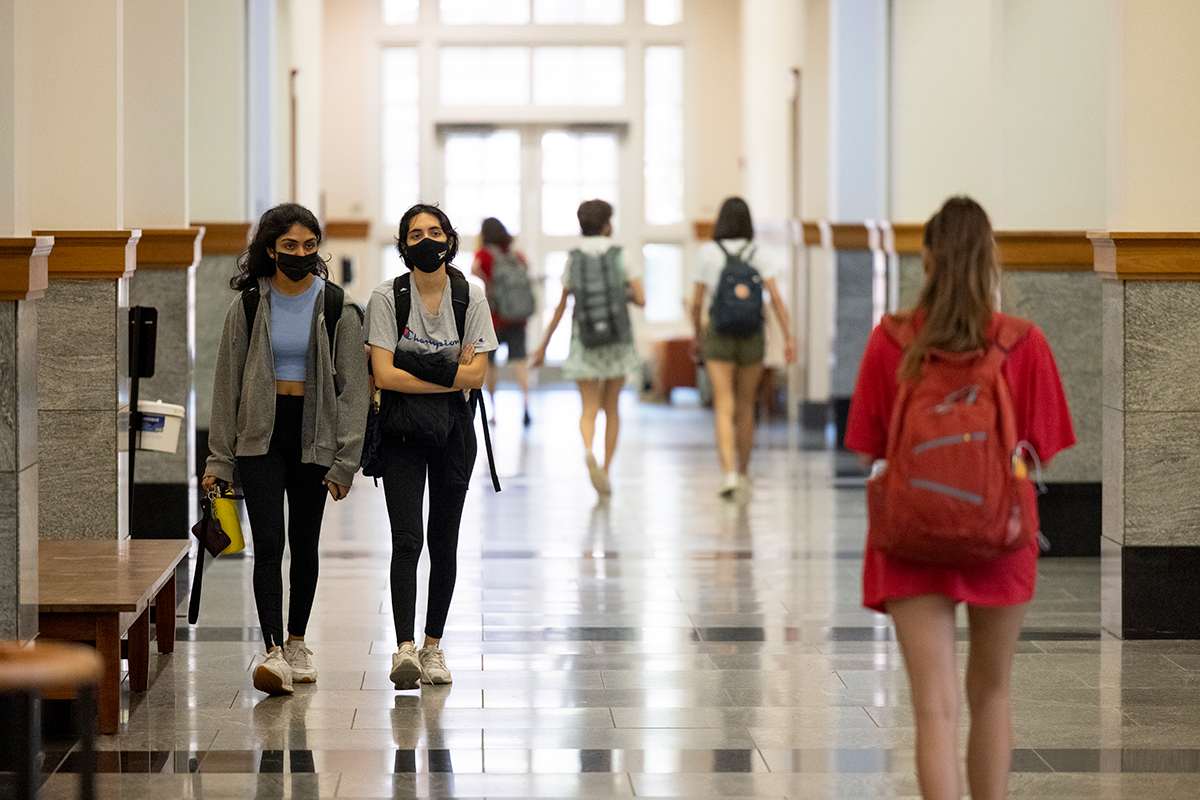Researchers estimate two-thirds of actual COVID infections were asymptomatic
COVID-19 infections among college students were more common than previous case reports showed, according to a new study from the University of Georgia.
Over 40% of students at one large public university showed signs of having had a COVID-19 infection between March 2020 and February 2021, but many of them were asymptomatic.
“The fact that young people are more likely to have asymptomatic disease but are still able to transmit it, makes it even easier for the disease to spread on a university campus,” said the study’s lead author Mark Ebell, a professor of epidemiology and biostatistics at UGA’s College of Public Health.
This study, which was recently published in the Journal of the American Board of Family Medicine, is one of the first to measure the prevalence of previous COVID-19 infection in a university setting in addition to the risk factors that drove infection. The researchers also measured the proportion of students who were experiencing “long COVID” symptoms.
The researchers surveyed 488 students between January and March, 2021, capturing data on demographics, symptoms, and other known risk factors of COVID infection like going out to bars or parties or living with a roommate. Students also had their saliva tested for antibodies to SARS-CoV-2.
Of the 432 students with valid antibody tests, between 41% and 42% of students surveyed displayed COVID antibodies.
From the start of the pandemic through early February 2021, there were 5,160 official reported cases at this university. The authors estimate the true number of cases as approximately 16,050, suggesting that over two-thirds of student infections were asymptomatic.
Being male and having roommates were significant risk factors for infection, and infections trended up when students went to more parties or out to bars.
“Even if you try to do things correctly on campus, students will be students, and they will go to bars if they can, and they will go to restaurants if they can, and they will go to parties if they can. And this infection will spread widely among them,” said Ebell.
He points to another important finding that of the students who reported a previous symptomatic infection, 11% were still having persistent symptoms two months later.
“That’s of concern,” said Ebell. “Will they eventually get back to normal? Will they always have some persistent symptoms? We know that there are people who have persistent fatigue, that can be disabling or that have a loss of taste and smell that can be disabling.”
The Omicron variant poses a new threat, especially now that younger people are leading new case rates.
“Get vaccinated and get a booster,” said Ebell as a take home message for students. “And at least for the next few weeks until the omicron surge has hopefully crested and passed and we’re back down to lower levels, be careful. Don’t go to restaurants, don’t go to bars, wear a mask on campus. It’s not only about protecting students; it’s about protecting hospitality workers and university staff who may be more vulnerable.”
He also urges students to wear “good masks” – ideally a KN95 or N95 mask, rather than a cloth mask alone.
The study, “High prevalence of previous infection with SARS-CoV-2 and persistent symptoms at a large university,” is available online.
Co-authors include Ye Shen, Cassie Hulme and Lauren Haines with UGA’s College of Public Health and David Forgacs, Ted Ross, Hannah Hanley and Alexandria Jefferson with UGA’s College of Veterinary Medicine.
– Lauren Baggett
Posted on January 19, 2022.







